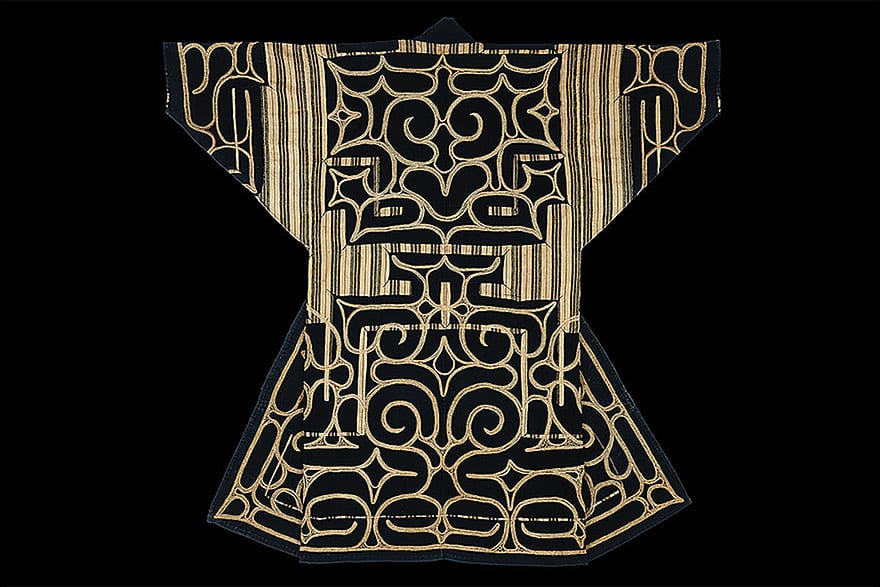Japanese crafts are as old as Japan itself. Rural crafts were made with natural materials to provide for daily necessities, and with time they became increasingly complex and sophisticated. Crafts were then produced to be exported and to help the economy.
Apprenticeships were long and difficult, necessary to master the techniques to work with ceramics, metal, and lacquer.
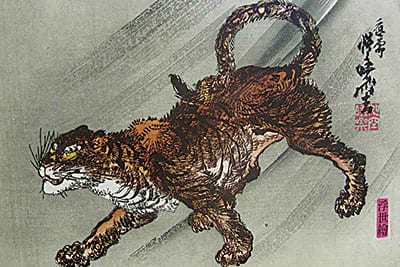
Traditions were passed down from the teacher to the student (orally or in writing), and industrial production was introduced only during the Meiji period. The feudal lords were no longer able to support the artisans, and industrial production replaced handmade objects as one of the most important parts of Japanese exports. However, Japanese people worked to conserve ancient objects and designated them as National Treasures, and in 1890 the Imperial Household Artists was founded. After WWII, a bigger effort was made to protect the intangible cultural properties of Japan, and thanks to this, a wide number of arts still exist.
Painting
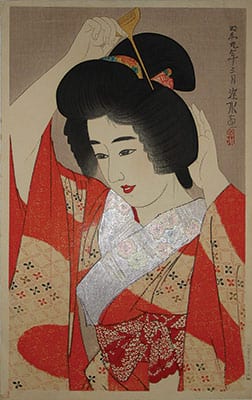
The oldest of the Japanese visual arts, painting, is complex and highly varied. Its history has been influenced by Chinese and western art, and some of its most popular subjects are religion, landscapes, ideograms, birds, and flowers.
During the Meiji period, Japanese traditional painting was called nihonga, mostly to distinguish it from western painting. The main difference lies in the materials used. The painting is done on a base made of paper, silk, wood, or plaster; and the colours come from natural pigments. To master the painting technique, long training is often necessary.
Among the many influences, nihonga relies on three other concepts: wabi, a transient beauty; sabi, the beauty of natural ageing; and yūgen, profound grace. These concepts can be easily seen behind some of the work of masters like Kawanabe Kyosai, whose Tiger is famous all over the world; and Katsushika Hokusai, who painted the most famous Japanese painting ever: The Great Wave off Kanagawa.
Textile

Looking at Japanese textiles is a good way to get an insight into Japanese society. Textiles, in fact, are a social badge and identify the wearer and his/her social status. Japanese textiles have a preference for natural materials and traditional ways of decorating.
Silk, hemp, and cotton are the main materials used, and weaving and dyeing techniques vary from place to place. In Okinawa, materials are dyed before weaving, while in Kanazawa it is common to use a paste for resist-dyeing, which creates intricate patterns. The Ainu people from Hokkaidō mainly use indigo dyeing, maybe the most common dyeing process.
Silk fabrics (when used for kimonos) are batch-dyed, whereas some coloured damask employs dyed silk warp thread and do not need to be further dyed. Cotton fabrics commonly use plain weave. Among the many dyeing techniques, stencil dyeing and freehand pasteresist-dyeing are respectively used for yukata (the summer kimono) and curtains.
Woodcraft and bamboo
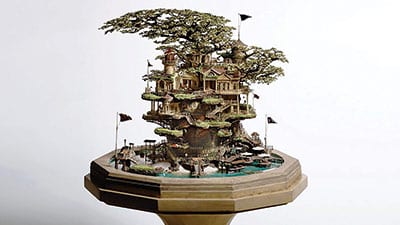
In Japan, woodcraft has a long history, with each region displaying its own peculiar products. Wood has always been widely used for houses, temples, household items, marquetry (yosegi), and furniture like tansu, a mobile storage cabinetry. Bamboo is mainly used for baskets, interior goods, etc.
Creating these crafts is a laborious process that must be performed by highly-skilled artisans. Any small mistake would be evident. To make a yosegi, timberis cut into oblong rods (different woodis used for different colours). Rods are glued together to form the desired pattern, and, as a final touch, coatings of lacquer are finally applied.
Basket weaving (kagome) is an art by itself. The woven arrangement is made by laths, composed by interlaced triangles; any point where two laths cross has four neighbouring points so that a pattern of trihexagonal tiling can be formed.
Japanese people worked to conserve ancient objects and designated them as National Treasures, and in 1890 the Imperial Household Artists was founded. After WWII, a bigger effort was made to protect the intangible cultural properties of Japan, and thanks to this, a wide number of arts still exist.
Ceramics
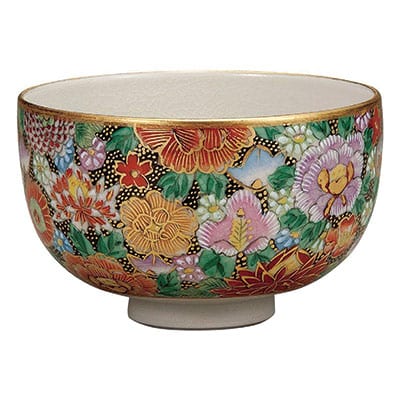
MATCHA TEA CEREMONY BOWL
Some of the oldest ceramics on earth has been found in Japan, and, through the long history of the country, dozens of different styles have been developed, especially under the influence of the pivotal tea ceremony.
In the past, pottery was made by pressing the clay into shape; the use of the wheel and of coiled methods developed later. Tools are usually made of wood or bamboo. Some of them are a Japanese version of commonly used tools, while others were specially invented in Japan.
Pottery and porcelain in Japan are unique, mostly because of the unique techniques used.
Yuri-kinsai is the gold-leaf application technique that creates some of the most unusual objects. Nerikomi is the traditional technique of creating patterns, using coloured clay. Blue and white pottery is maybe the most widespread technique, known all over the world, which came to Japan through China.
Lacquerware
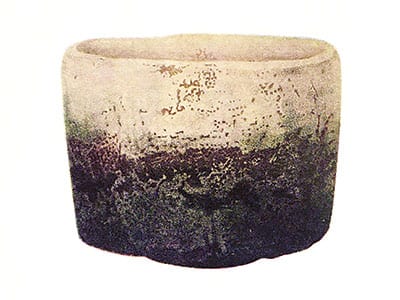 The origin of lacquerware, as well as pottery, can be traced back to prehistory. Japanese lacquerwares are made of wood, covered with multiple layers of lac juices, which make the object waterproof and resistant.
The origin of lacquerware, as well as pottery, can be traced back to prehistory. Japanese lacquerwares are made of wood, covered with multiple layers of lac juices, which make the object waterproof and resistant.
Daily objects, tea ceremony utensils, and incense containers are commonly made of lacquerware and many different techniques are used to obtain the final object. Urushi-e is the oldest decorating technique (also used for woodblock prints), and it simply consists of painting something with actual lacquer; while maki-e is used to apply gold as a decoration.
Ikebana and Bonsai

Ikebana is the art of flower arrangement. It originated during the 6th century and knew its peak under Buddhist masters during the 16th century. Nowadays, there are more than 1,000 schools of ikebana all over the world, all of them guided by the Buddhist concept of life preservation.
With ikebana, humanity and nature are brought together. Shape, line, and form are extremely important, and through every arrangement, the artist tries to convey a special meaning.
Bonsai is an art that produces extremely small trees, using traditional cultivation techniques, which are created for the contemplation of the viewer.
